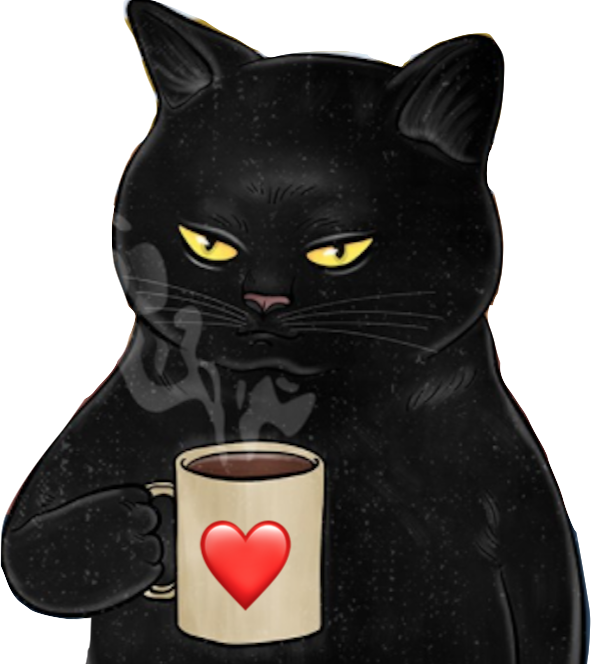IoT(アイオー ティー)とは?
What is IoT,
acronym of Internet Of Things?

IoT(アイオー ティー)とは?
What is IoT,
acronym of Internet Of Things?

IoT、アイオーティ(いち、ぜろ、てぃ、ではない!)とは、Internet of Things、IoT、つまり「モノのインターネット」「物のインターネット」(ウィキの訳語)あるいは「諸事物のインターネット」(著者の用語)のこと である。アイオーティとは、モノの流通・売買がインターネットによる繋がる現象のことである。
The Internet of things (stylised Internet of Things or IoT) is the internetworking of physical devices, vehicles (also referred to as "connected devices" and "smart devices"), buildings and other items—embedded with electronics, software, sensors, actuators, and network connectivity that enable these objects to collect and exchange data.[1][2][3] In 2013 the Global Standards Initiative on Internet of Things (IoT-GSI) defined the IoT as "the infrastructure of the information society."[3] The IoT allows objects to be sensed and/or controlled remotely across existing network infrastructure,[4] creating opportunities for more direct integration of the physical world into computer-based systems, and resulting in improved efficiency, accuracy and economic benefit.[5][6][7][8][9][10] When IoT is augmented with sensors and actuators, the technology becomes an instance of the more general class of cyber-physical systems, which also encompasses technologies such as smart grids, smart homes, intelligent transportation and smart cities. Each thing is uniquely identifiable through its embedded computing system but is able to interoperate within the existing Internet infrastructure. Experts estimate that the IoT will consist of almost 50 billion objects by 2020.[11]- Wikipedia
モノのインターネット(Internet of
Things、略称IoT)とは、電子機器、ソフトウェア、センサー、アクチュエーター、ネットワーク接続が組み込まれた物理デバイス、乗り物(「コネク
テッド・デバイス」や「スマート・デバイス」とも呼ばれる)、建物、その他の物品をインターネットに接続することで、これらのモノがデータを収集・交換で
きるようにすることである。2013年、モノのインターネットに関する世界標準化機構(IoT-GSI)は、IoTを「情報社会のインフラ」と定義した。
IoTは、既存のネットワーク・インフラを越えて、モノのセンシングや遠隔制御を可能にし、物理世界をコンピュータ・ベースのシステムにより直接統合する
機会を創出し、効率、精度、経済的利益を向上させる。IoTがセンサーやアクチュエーターで拡張されると、この技術はより一般的なサイバーフィジカルシス
テムの一例となり、スマートグリッド、スマートホーム、インテリジェント交通、スマートシティなどの技術も包含される。それぞれのモノは、組み込まれたコ
ンピューティング・システムによって一意に識別できるが、既存のインターネット・インフラ内で相互運用することができる。専門家は、IoTは2020年ま
でにほぼ500億個のモノで構成されると推定している。
1999年、Kevin Ashton (1968- )は、非接触のICタグ(RFID, radio frequency identifier)をつかった商品管理システムが、ネットワークに繋がり、それがオーダーとレスポンスの組み合わせのチェイン(=コミュニケーショ ン)に情報と物流の両方が乗っかるシステムのことと思われるようになった。しかしながら、IoTの歴史はウィキペディア(英語)によると、さらに 歴史は古 いように思われる(ウィキオリジナルにあるように時々出典が怪しいものがある:2016年12月16日閲覧)。
As of
2016, the vision of the Internet of things has evolved due to a
convergence of multiple technologies, including ubiquitous wireless
communication, real-time analytics, machine learning, commodity
sensors, and embedded systems.[18] This means that the traditional
fields of embedded systems, wireless sensor networks, control systems,
automation (including home and building automation), and others all
contribute to enabling the Internet of things[24] (IoT).
2016年現在、モノのインターネットのビジョンは、ユビキタス無線通信、リアルタイム分析、機械学習、コモディティセンサー、組込みシス テムを含む複数の技術の収束によって進化している[18]。これは、組込みシステム、無線センサーネットワーク、制御システム、オートメーション(ホーム オートメーションやビルディングオートメーションを含む)などの従来の分野がすべて、モノのインターネット[24](IoT)の実現に貢献していることを 意味する。
The concept of a network of smart devices was discussed as early as 1982, with a modified Coke machine at Carnegie Mellon University becoming the first Internet-connected appliance,[25] able to report its inventory and whether newly loaded drinks were cold.[26] Mark Weiser's seminal 1991 paper on ubiquitous computing, "The Computer of the 21st Century", as well as academic venues such as UbiComp and PerCom produced the contemporary vision of IoT.[27][28] In 1994 Reza Raji described the concept in IEEE Spectrum as "[moving] small packets of data to a large set of nodes, so as to integrate and automate everything from home appliances to entire factories".[29] Between 1993 and 1996 several companies proposed solutions like Microsoft's at Work or Novell's NEST. However, only in 1999 did the field start gathering momentum. Bill Joy envisioned Device to Device (D2D) communication as part of his "Six Webs" framework, presented at the World Economic Forum at Davos in 1999.[30]
カーネギーメロン大学の改良型コーラマシンが、インターネットに接続された最初の電化製品となり、その在庫や新しく投入された飲み物が冷め ているかどうかを報告することができた[25]。マーク・ワイザーによるユビキタス・コンピューティングに関する1991年の代表的な論文「21世紀のコ ンピュータ」や、UbiCompやPerComといった学術的な場が、IoTの現代的なビジョンを生み出した。 [27][28]1994年、レザ・ラジはIEEE Spectrumでこのコンセプトを「家電製品から工場全体まであらゆるものを統合し自動化するために、小さなデータパケットを大規模なノード群に移動さ せる」と表現した[29]。しかし、この分野が勢いを増し始めたのは1999年のことである。ビル・ジョイは、1999年にダボスで開催された世界経済 フォーラムで発表した「6つのウェブ」フレームワークの一部として、デバイス間通信(D2D)を構想した[30]。
The term "Internet of Things" was coined by Peter T. Lewis in a 1985 speech given at a U.S. Federal Communications Commission (FCC) supported wireless session at the Congressional Black Caucus 15th Legislative Weekend Conference. In his speech he states that "The Internet of Things, or IoT, is the integration of people, processes and technology with connectable devices and sensors to enable remote monitoring, status, manipulation and evaluation of trends of such devices."[23][better source needed]
モノのインターネット(Internet of Things)」という言葉は、ピーター・T・ルイス(Peter T.
Lewis)が1985年、米国連邦通信委員会(FCC)が支援する第15回連邦議会黒人議員会議(Congressional Black
Caucus 15th Legislative Weekend
Conference)のワイヤレス・セッションで行ったスピーチで用いた造語である。彼はスピーチの中で、「モノのインターネット(IoT)とは、人、
プロセス、テクノロジーを接続可能なデバイスやセンサーと統合し、そのようなデバイスの遠隔監視、ステータス、操作、傾向の評価を可能にすることである」
と述べている[23][better source needed]。
The concept of the Internet of things became popular in 1999, through the Auto-ID Center at MIT and related market-analysis publications.[31] Radio-frequency identification (RFID) was seen by Kevin Ashton (one of the founders of the original Auto-ID Center) as a prerequisite for the Internet of things at that point.[32] Ashton prefers the phrase "Internet for Things."[33] If all objects and people in daily life were equipped with identifiers, computers could manage and inventory them.[34][35][36] Besides using RFID, the tagging of things may be achieved through such technologies as near field communication, barcodes, QR codes and digital watermarking.[37][38]
無線自動識別(RFID)は、ケビン・アシュトン(オリジナルのAuto-ID
Centerの創設者の一人)によって、その時点でモノのインターネットの前提条件と見なされていた。
[アシュトンは「モノのためのインターネット」という表現を好んでいる[32]。日常生活におけるすべてのモノや人が識別子を備えていれば、コンピュータ
はそれらを管理し、目録を作成することができる[34][35][36]。RFIDを使用する以外にも、近距離無線通信、バーコード、QRコード、電子透
かしなどの技術によってモノのタグ付けが実現される可能性がある[37][38]。
In its original interpretation,[when?] one of the first consequences of implementing the Internet of things by equipping all objects in the world with minuscule identifying devices or machine-readable identifiers would be to transform daily life.[39][40] For instance, instant and ceaseless inventory control would become ubiquitous.[40] A person's ability to interact with objects could be altered remotely based on immediate or present needs, in accordance with existing end-user agreements.[32] For example, such technology could grant motion-picture publishers much more control over end-user private devices by remotely enforcing copyright restrictions and digital rights management, so the ability of a customer who bought a Blu-ray disc to watch the movie could become dependent on the copyright holder's decision, similar to Circuit City's failed DIVX.
世界中のあらゆるモノに極小の識別装置や機械が読み取り可能な識別子を装備することで、モノのインターネットが実現する最初の結果のひとつ
は、日常生活を一変させることである。例えば、瞬時にして絶え間ない在庫管理がユビキタスになるだろう。また、既存のエンドユーザーとの契約に従って、即
時または現在のニーズに基づいて、人がモノと相互作用する能力を遠隔操作で変更することができる。例えば、このようなテクノロジーは、著作権制限とデジタ
ル著作権管理を遠隔で実施することによって、映画出版社にエンドユーザーの私物デバイスに対するはるかに大きなコントロールを与えることができる。そのた
め、ブルーレイディスクを購入した顧客が映画を見る能力は、サーキット・シティが失敗したDIVXのように、著作権者の決定に依存するようになるかもしれ
ない。
このようなIoTのコンセプトは、ウィキコモンズによって次のようにイラストで表現されている。



出典:https://en.wikipedia.org/wiki/Internet_of_things
●デジタルエコノミーと新しい価値の創造
"Digital economy refers to an economy that is based on digital computing technologies, although we increasingly perceive this as conducting business through markets based on the internet and the World Wide Web.[1] The digital economy is also referred to as the Internet Economy, New Economy, or Web Economy. Increasingly, the digital economy is intertwined with the traditional economy, making a clear delineation harder. It results from billions of everyday online connections among people, businesses, devices, data, and processes. It is based on the interconnectedness of people, organizations, and machines that results from the Internet, mobile technology and the internet of things (IoT).[2] Digital economy is underpinned by the spread of Information and Communication Technologies (ICT) across all business sectors to enhance its productivity.[3] Digital transformation of the economy is undermining conventional notions about how businesses are structured, how consumers obtain services, informations and goods and how states need to adapt to these new regulatory challenges.[4]" - Digital economy.
●情報ロジスティクス
ちなみに、池田光穂は、インターネットが職場に導入された1996年当時、電子メールやウェブによる発注システムが導入されることで、研究教育 環境は大きく変わることを予測して、それを「情報ロジスティクス(informetion logistics)」と名づけた(→「情報ロジスティクスとは?」「情報ロジス ティクス」)。Dr. Darek M. HAFTORは、2009年にWhat is Information Logistics ?なる論文を書いているが、不肖この私は1990年代にすでにこのことを提唱しており、当時 私の研究室に納品する「洋書屋さん」と口角泡を飛ばして議論していたのである。エヘン!
なお、IoTと聞くと、インターネットのアマゾンによる注文かい、と思うとうりなのだが、実は、大学の教室はこのIoTの実践の現場である。な ぜなら、大学の講義やゼミにおいて、教授が、シラバスやハンドアウトに載っていない参考文献を提示したとすると、スマートな学生は、自分のもっているス マートフォンで、教室のWifiを経由して、大学図書館にその所蔵を確かめたり、書籍の貸出(ローン)の予約をしたりする。また、所蔵がなければ、アマゾ ンの書物の検索をして、プライム発送なのか、それともユーズドで安価なものが手に入りそうなら、自分の財布と時間的コストを計算して、発注したりブック マークをしたりするという操作をおこなっているからである。IoTは、流通の革命でもなんでもなく、現代の大学教員と学生・院生にとっては、デフォルト (文字通り事実としての;de facto)現実世界の現象なのである。
● Open IoT versus Colose IoT
オープンIoTは、モノと情報がシームレスにインターネットを媒介して繋がるさまを、クローズIoTは、企業内や工場内で物流と情報が共有再配分されることをさす。
リンク
文献
その他の情報
Copyleft, CC, Mitzub'ixi Quq Chi'j, 1996-2099
Do not paste, but
[Re]Think our message for all undergraduate
students!!!